Romano Cheese in 2025: Ready to Steal Parmesan’s Spotlight
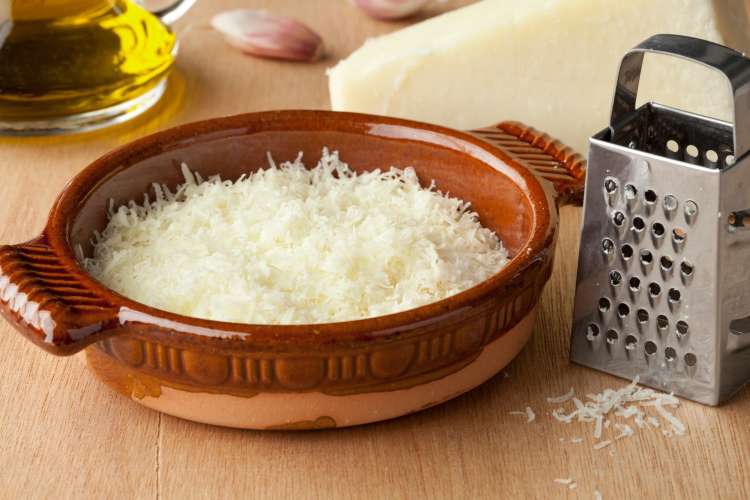
If you’re a foodie who loves experimenting with different types of cheese, consider adding Romano cheese to your shopping list. This sharp, salty favorite is the American answer to Pecorino Romano and adds serious flavor to pizza, pasta and other savory dishes.
Curious what Romano cheese is best for or how it compares to similar cheeses? This guide covers everything from substitutes to where to buy it, plus how to use Romano cheese on pizza and beyond.
Jump to Section
- Where Does Romano Cheese Come From?
- Romano Cheese Taste and Texture
- How Romano Cheese is Made
- Cooking With Romano Cheese
- Romano Cheese Recipes To Try
- Romano Cheese Substitutes
- Where to Buy Romano Cheese
- Romano Cheese FAQs
Where Does Romano Cheese Come From?
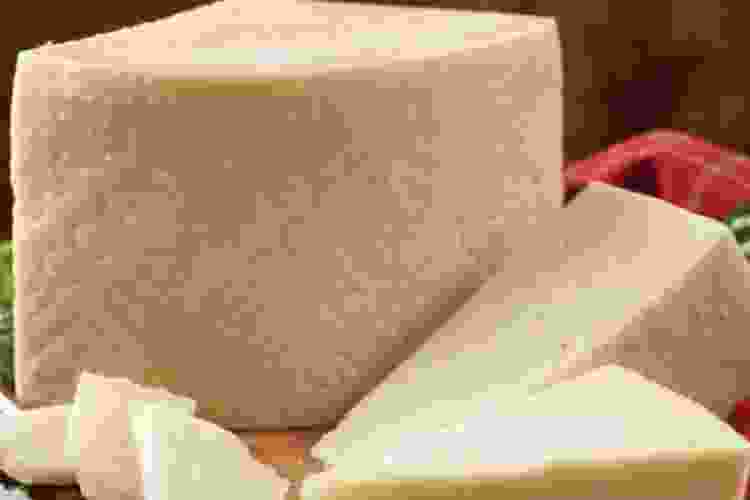
Romano cheese is a hard, salty cheese originally from the Lazio region of Italy, though most of it is now made in Sardinia. The classic version — Pecorino Romano — is made from sheep’s milk, which gives it a sharp, earthy flavor that really stands out in pasta and sauces.
It’s similar to Parmesan, although there are a few key differences to note when comparing Romano cheese vs Parmesan. Romano has a distinct earthy taste from the sheep’s milk, while Parmesan, which is made from cow’s milk, is more nutty. Romano is also saltier than Parmesan. Parmesan is typically aged longer, for about a year, while Romano is aged for 5-8 months. Both Parmesan cheese and Romano cheese are primarily used for grating over dishes such as pizza, pasta and salads.
You might also be wondering, Is Romano cheese goat cheese? In the U.S., some Romano-style cheeses are made from cow or goat’s milk, but traditional Romano is made exclusively with sheep’s milk.
Romano Cheese Taste and Texture
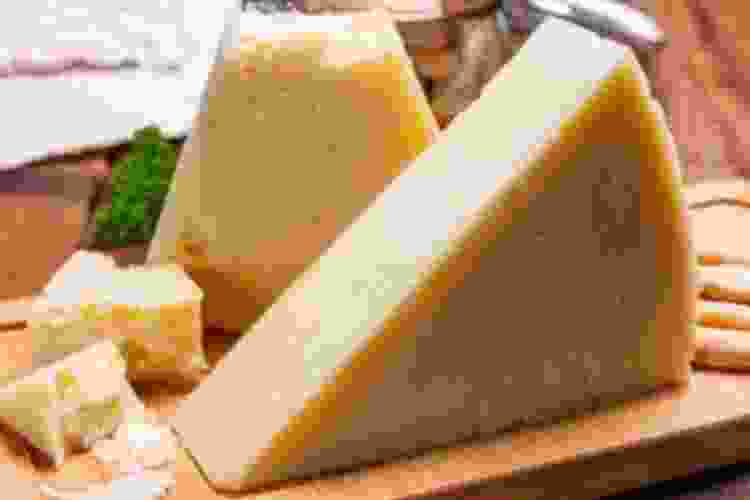
Romano cheese has a punchy, salty bite that stands out, especially the traditional sheep’s milk version. It’s sharper and more intense than Parmesan, with a crumbly, almost gritty texture that makes it perfect for grating. Even the American version, made with cow’s milk, still packs a good hit of flavor and works well sprinkled over pasta or stirred into sauces.
How Romano Cheese is Made
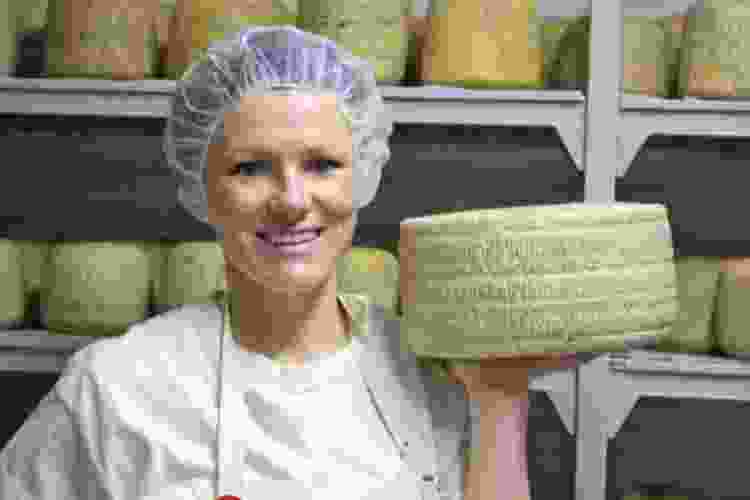
Traditional Pecorino Romano starts with sheep’s milk, warmed with a starter culture before adding lamb rennet to form curds. The curds are cut, heated, and pressed into molds, then salted and aged for up to a year. U.S.-made Romano cheese follows a similar process, but the use of cow’s milk gives it a milder flavor and slightly different texture.
Cooking With Romano Cheese
1. Grated Over Pasta
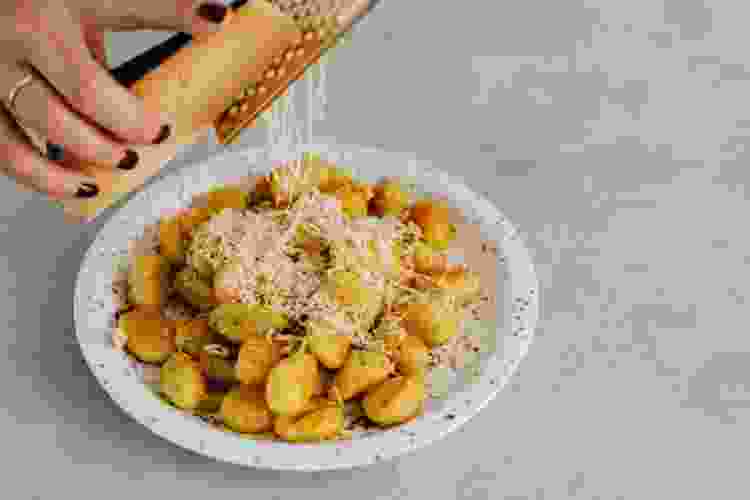
Whether it’s a classic red sauce or creamy Alfredo, Romano cheese always delivers as a pasta topper. Grate it over your favorite dish for a salty, savory pop in every bite. Want to try your hand at authentic Italian recipes using Romano cheese? Cooking classes in Atlanta, Chicago and Baltimore teach you techniques and recipes from top-rated local chefs. Is there anything better than fresh pasta with Romano cheese grated on top? Even better: the satisfaction of knowing you made it yourself. Online cooking classes are also available if you can’t make it to one in person.
2. As a Pizza Topping
Romano cheese on pizza brings sharp, salty contrast to mellow mozzarella. A light sprinkle before baking adds bold flavor without overpowering the pie.
3. Crumbled on Salads
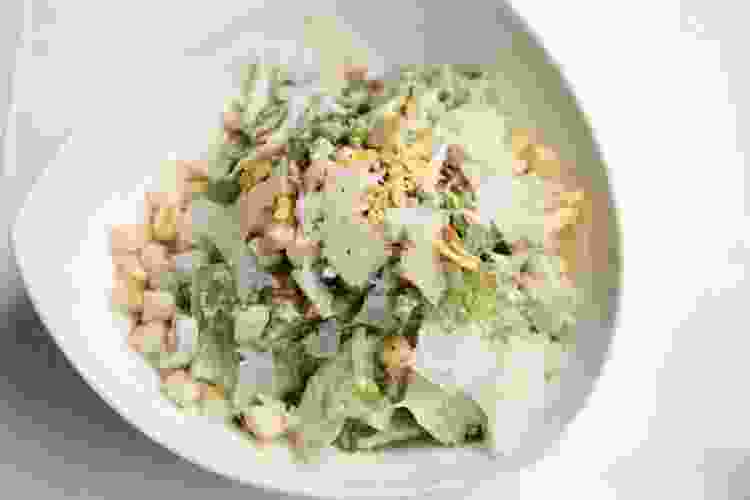
Shaved, grated or crumbled Romano cheese is an underrated salad topper and it’s a great way to add tang. Pair it with earthy greens and finish with a simple vinaigrette for a dish that feels both rustic and refined.
Romano Cheese Recipes To Try
1. Cacio e Pepe

A staple in Roman cuisine, Cacio e Pepe (literally “cheese and pepper”) keeps it simple with just pasta, freshly grated Romano and cracked black pepper. To make it, you simply combine freshly grated Romano cheese with pasta water and cracked pepper to create a delicious sauce.
2. Pasta alla Gricia
Often described as a meatier version of Cacio e Pepe, this dish adds guanciale (cured pork cheek) for richness. It’s still simple, still satisfying, and a great showcase for Romano cheese.
3. Pasta Amatriciana
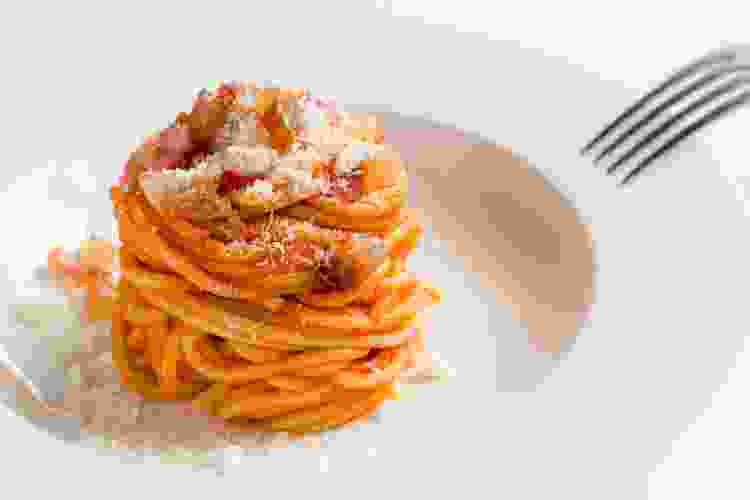
Amatriciana builds on the base of Gricia, adding tomatoes and red pepper flakes for heat and acidity. Romano cheese balances it all out with a salty punch.
4. Pasta Carbonara
One of the most famous Roman pasta dishes, carbonara brings together raw egg, guanciale (or pancetta), black pepper and plenty of Romano cheese. The result is creamy, rich and surprisingly easy to make — no cream required.
Romano Cheese Substitutes

If you can get your hands on traditional Pecorino Romano, that’s your top pick. It’s always made with sheep’s milk and follows strict production rules, giving it a sharper, tangier flavor than Romano cheese, which can be made from cow’s, goat’s or sheep’s milk and has no protected status. The flavor of Pecorino Romano is much tangier and more robust than Romano cheese, which is milder and nuttier (like Parmesan).
Parmesan and Grana Padano have similar flavors and textures. Both are firm, nutty and easy to find and are perfect for grating and shaving over pasta, pizza and salad. Asiago cheese is another great option; it's slightly sweeter but still bold enough to complement savory dishes. For something a little different, try Manchego. This Spanish cheese is also made from sheep’s milk and brings a similar rich, tangy edge. Cotija cheese, a crumbly Mexican cheese, can also work in a pinch when you want that salty finish.
Where to Buy Romano Cheese
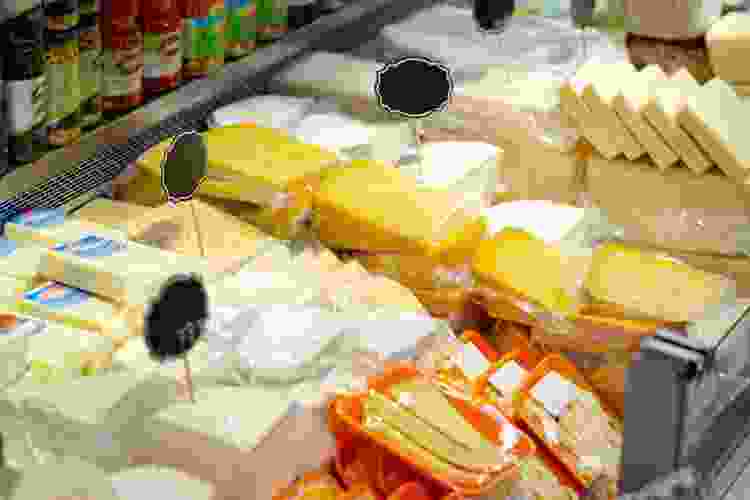
If you’re curious about where to buy Romano cheese, look in the deli section of your local grocery store. You’ll often find it with the specialty cheeses and other ingredients for cheese board ideas. Authentic Pecorino Romano cheese is sometimes harder to locate, but online retailers like Olio & Olive have it in stock. As far as the Romano Cheese price, authentic Pecorino Romano typically goes for roughly $20 per pound. American-made varieties are usually cheaper.
Romano Cheese FAQs
Is Romano Cheese the Same as Parmesan?

Not quite. Both are hard Italian grating cheeses, but they differ in milk type, flavor and texture. Parmesan is made with cow’s milk and has a nutty, slightly sweet flavor, while traditional Romano (especially Pecorino Romano; American varieties can be made with cow’s or goat’s milk) is made with sheep’s milk and packs a saltier, more earthy punch. Parmesan is typically aged longer, too.
What Cheese Is Romano Similar To?
Romano is closest to other aged, hard Italian cheeses. Grana Padano and Parmesan both work as substitutes, with Grana Padano being a bit saltier and tangier. Asiago is another option, offering a nutty richness. Outside Italy, Manchego and even Cotija can provide a similar salty, firm bite.
What Is Romano Cheese Best For?
Romano cheese is best used as a grating cheese due to its hard texture. It makes a great garnish for pizza and pasta, and it’s delicious as a salad topper. Freshly grated Pecorino Romano is traditionally used in Roman pasta dishes, such as Cacio e Pepe, Pasta alla Gricia, Pasta Amatriciana and Pasta Carbonara.
Is Romano Cheese Good for You?
Yes, not only is Romano cheese tasty, but it also has health benefits. According to a study in the National Library of Medicine, Pecorino Romano cheese is rich in CLA, or conjugated linoleic acid. This naturally occurring compound has been shown to reduce inflammation and may aid in weight management.
Is Romano Cheese Goat Cheese?
No, Romano cheese is not goat cheese. While some varieties (mainly those made in the U.S.) use goat’s or cow’s milk, sheep’s milk is the standard method of production.
Can You Make Romano Cheese At Home?
Yes, you can make Romano cheese at home, but you’ll need some specific ingredients and equipment. You’ll begin by heating your choice of milk (sheep, cow or goat) to just under 90 degrees F before adding starter cultures and rennet. As the rennet starts to work its magic, the milk will thicken and eventually curdle. Once this happens, you can cut the curds into small pieces to release whey. Then, you’ll heat the curds once again, drain them and press them into a mold. Finally, place the cheese wheel into a brine and age it for the best flavor and texture results.
Now that you know what makes Romano cheese so special — from its salty bite to its Roman roots — you’re ready to add it to your kitchen lineup. Whether you’re tossing it over pasta, sprinkling it on pizza or making a traditional Roman recipe, Romano cheese is a small touch that makes a big difference.
For more ways to explore bold flavors, check out other foodie experiences on Classpop!

